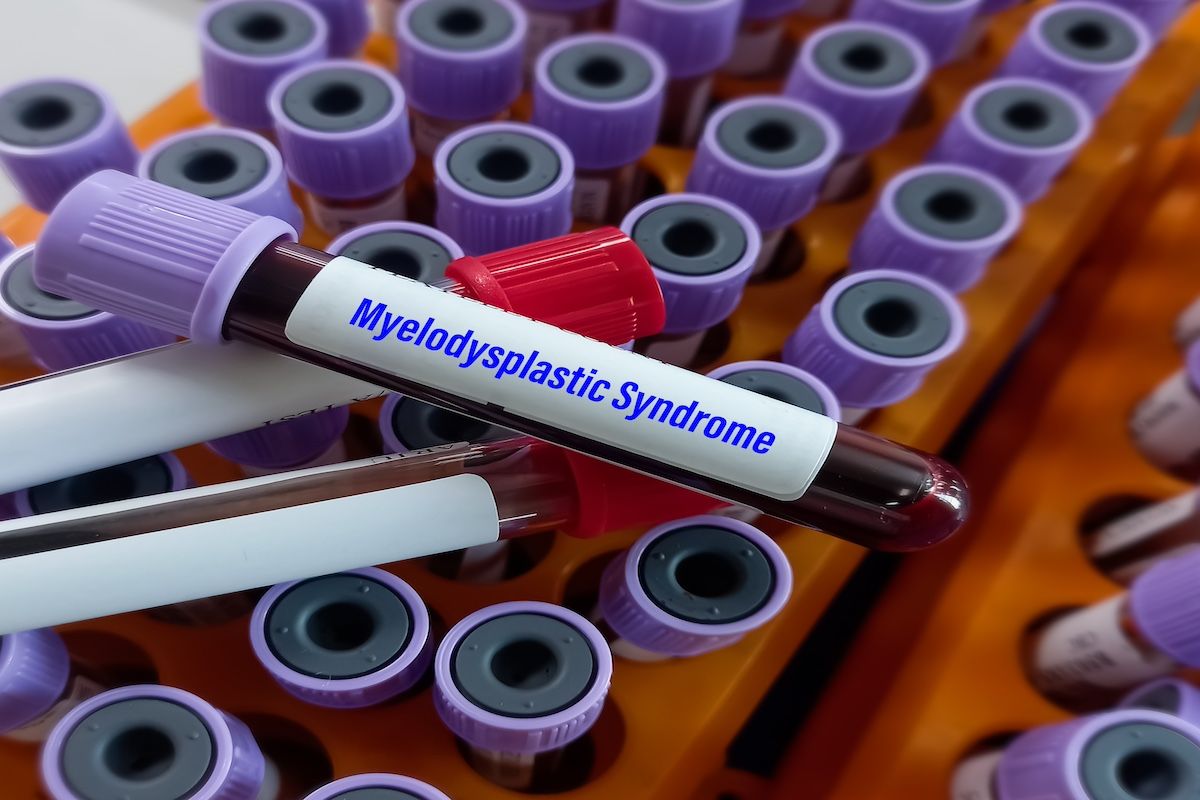Video
Considering the Role of ESAs and Blood Transfusions in MDS Management
Author(s):
Reflections on the historical use of ESAs and blood transfusions to treat patients with myelodysplastic syndromes.
Transcript:
Bruce Feinberg, DO: That’s a great segue, because we want to move into the treatment. That’s our next conversation. Let’s go back and address it somewhat historically. For a long time, it was transfusions and erythroid growth factors. You did that until they were exhausted, and by then you were looking at acute leukemia treatment. We had hypomethylating agents come into the story, and things started to change, but they’re pretty toxic. The community doctors were somewhat hesitant to embrace the difficult schedules of administration. We got a lot of off-label ways in which they were being used. Let’s go back to the first generation of treatment with transfusions and ESAs [erythropoiesis-stimulating agents]. To what extent do they remain a mainstay or platform of treatment?
Amer Zeidan, MBBS, MHS: Those remain the mainstay of treatment for MDS [myelodysplastic syndromes]. ESAs are the most commonly used treatment for MDS. They aren’t FDA approved for this indication, but we continue to use them routinely. For lower-risk MDS, which is the vast majority of patients, the overall effectiveness remains reasonable. It’s around 40% for unselected patients.
Bruce Feinberg, DO: But when you say effectiveness is 40%, is that generating transfusion independence or a lesser dependence? Because there could be a lesser dependence but still transfusion dependence. You could have gone from 4 units a month to 2 units, but the scale has always been transfusion independence. I’m curious because I saw in the community a lot of physicians equivocating. They seem to be doing better but don’t meet those more rigid criteria. It felt like, are we prolonging a therapy that’s ineffective, or are we getting some partial benefit? Just riff on that a little for me.
Amer Zeidan, MBBS, MHS: That’s an excellent observation. The 40% refers to transfusion independence, not needing transfusions anymore. If you look at the response criteria for MDS, there are a lot of nuances on how there are minor and major responses and reduction the transfusion needs and all that. However, to your point, for a long time and until now, we saw patients who have been on ESAs for many years despite needing regular transfusions. That’s because someone—the physician or the patient— says they feel better, although they’re still getting the same amount of transfusion. This is a function of what else you have to offer the patient. If you don’t have much to offer the patient, there has been an approach to continue doing what you’re doing just to feel better. You’re doing something for the patient. Clearly with additional options, they’re starting to change. Those patients clearly should be referred sooner once it’s clear that they’re still needing transfusions.
Bruce Feinberg, DO: Ryan, what do you see in Emory Healthcare? Because it’s got to be a fairly universal phenomenon. Even if they’re not eligible for a clinical trial or they don’t want to go on a clinical trial, you have a very safe option that has high patient acceptance. It’s always this question. When were they transfused? Do you start the count all over again? How are you managing that? Do you see a wholesale change in that approach once patients get in the doors of Emory Healthcare, or are there a lot of patients who get continued in that way for months before something changes?
Ryan Haumschild, PharmD, MS, MBA: ESAs and blood transfusions are a mainstay, and even for some of the providers who are used to treating the patients initially, you want to have shared decision-making around that patient. Do we try something in terms of an aggressive treatment strategy? Do we keep you maintained? Some patients will say, “I’m getting my ESA. I’m getting my blood transfusion. I’m OK with it. Can we just keep status quo?” We’re working on changing that, because if you think about it, someone’s getting that ESA and we have to make sure their iron saturation is right. If they’re not above 25% iron saturation, is that ESA even going to do anything for them? How is that drain as we start to look at the total cost of care?
To your point, Bruce, changing that treatment strategy of maintaining to creating some progress there for patients, because patients will get used to the blood transfusions. They require maybe 2 or less. They’re doing OK with it right now, but what a drain that is on the patient and health system to have them keep coming back. We’re starting to look a little further as opposed to at just ESAs and blood transfusion. We absolutely want to try those in the frontline setting, but when a patient isn’t responding, how do we become a little faster to react to that instead of just keeping that patient in the same realm where they may not been seeing a ton of therapeutic benefit?
Bruce Feinberg, DO: Tracey, this can be hard to navigate because it’s not like the 1 strategy is wrong. It just feels mired in the past. From a standpoint of how you communicate to patients, how do you tease the possibilities that they should be asking for other things or the questions they need to be asking?
Tracey Iraca: Ryan touched on it. It depends on personality. Some patients are comfortable. They like the status quo and are happy with their routine. As long as their transfusions aren’t getting closer together, they’re OK. They know that if they need more frequent transfusions, that means they’re getting worse. That’s the perception. And that if they can extend them, they’re getting better. That’s the limited amount a lot of patients think about it. As long as they know that when they’re feeling low right before a transfusion, they’re going to feel that boost afterward. They start to look at alternatives when their transfusion no longer makes them feel as good as it once did. That’s when they start to consider other options. Some patients are very happy just sitting in that place. Other patients are more adventurous and say, “I’ve been at this spot for a long time. What’s next?”
Bruce Feinberg, DO: Amer, we start with the transfusion ESA. Are there any select patients like 5q minus who would immediately go to an alternative therapy?
Amer Zeidan, MBBS, MHS: Yes. For most patients who need transfusions, the main way we think about ESA is based on 2 factors. One is how many transfusions they’re needing. Studies have shown that if the patient is needing a lot of transfusions, they’re less likely to respond to ESAs. The second thing is erythropoietin [EPO]. If their level is above 500 mU/mL, it’s unlikely that they’d respond to ESA. We look at these 2 factors. However, you’re right that patients who have deletion 5q are very sensitive to lenalidomide. However, whether you start the drug from the get-go or after ESA failure is a subject of debate. There are different practices. Although lenalidomide is an oral agent, it can come with some adverse effects that aren’t present with ESA. Some people, even when you have deletion 5q, might sometimes try ESA as a frontline treatment if their EPO level isn’t high or the patient doesn’t need a lot of transfusions.
Transcript edited for clarity.





